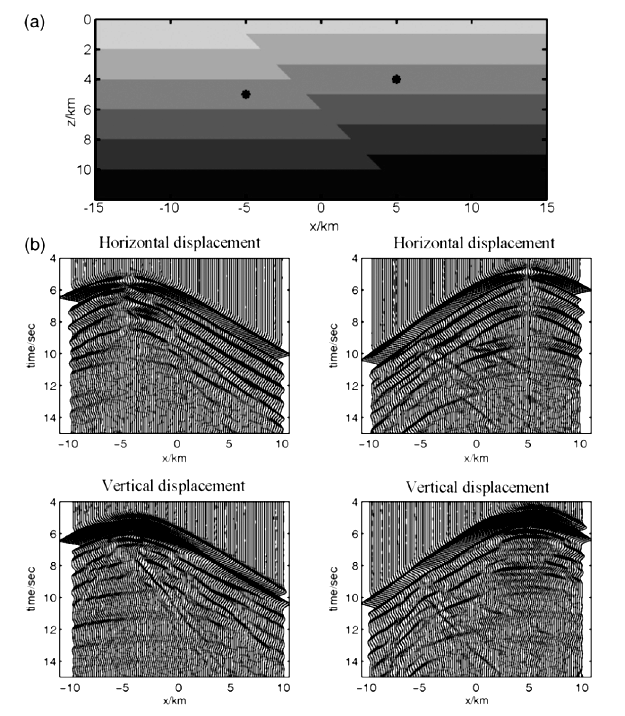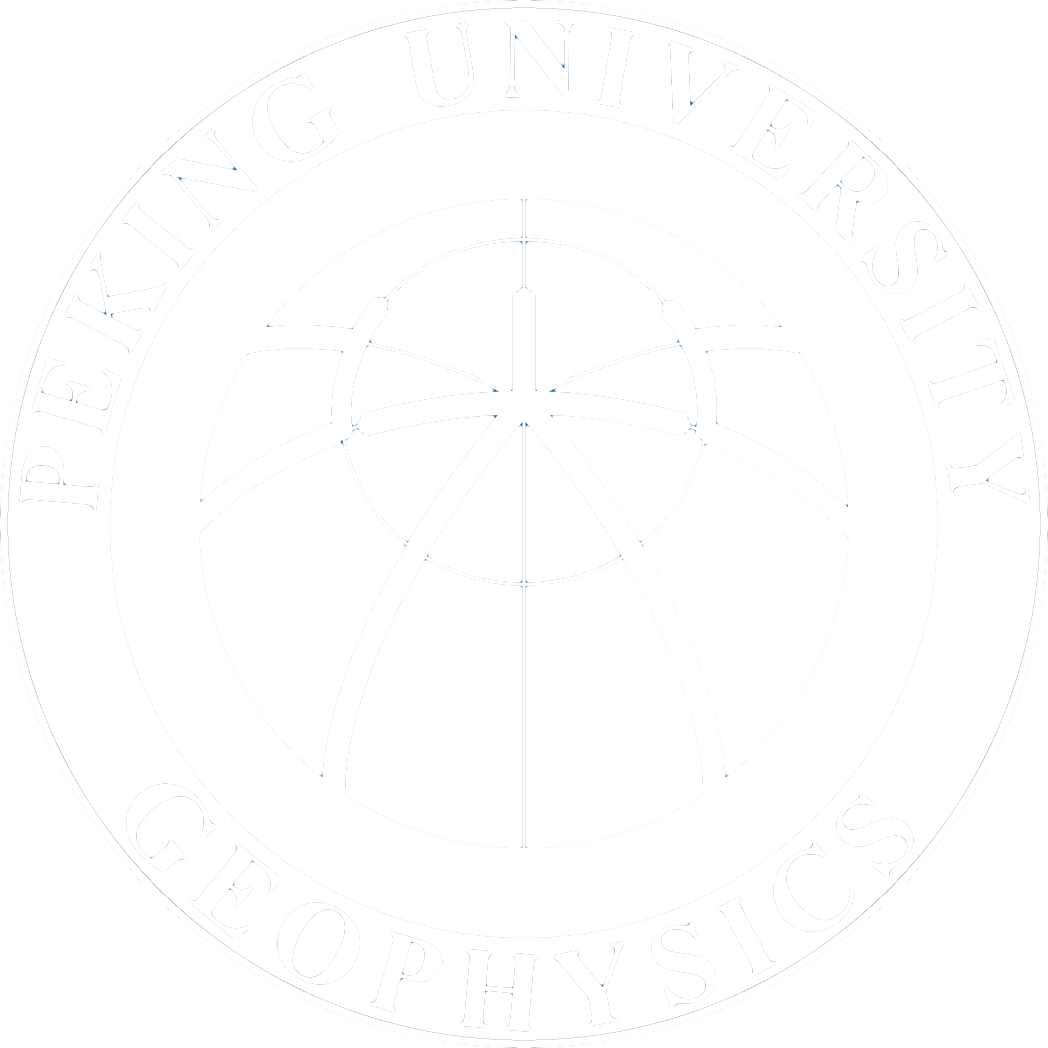High-Performance Computational Geophysics
Zhao, Li
Computational Seismology. Developed practical algorithms for the inversion of earthquake finite-fault ruptures in complex Earth models involving 3D heterogeneities and surface topography, which enables near real-time inversions of finite earthquake sources and estimations of strong ground motion for the purposes of emergence response and physics-based seismic hazard assessment.
Wang, Yanbin
Computational Seismology. Developed algorithms for seismic wave propagation in complex structures across global, regional and local scales based on pseudo-spectral and finite-difference methods, with applications to the simulations of the wavefields of Moon and Mars quakes and strong ground motion of sedimentary basins.

Snapshots of global P-SV wavefields from a 100-km deep moonquake calculated in 2D Moon model by pseudo-spectral and finite difference hybrid method.
Ge, Zengxi
Numerical simulation of seismic wave propagation. Developed an algorithm to compute the seismic wave propagation in multiple-layered media by combining the general global reflection/transmission method with the boundary element method.

Seismic wave in a reverse fault model computed by the global transmission/reflection boundary element method. (a) The velocity model and location of sources. (b) Computed synthetic seismograms for above two sources.
Berndt, Thomas A.
Computational Rock Magnetism. Rocks contain a multitude of magnetic minerals that contain records of the behavior of the geomagnetic field, as well as geodynamic and environmental processes. Micromagnetic finite-element simulations of such minerals allow the detection and characterization of them from non-destructive, non-intrusive magnetic measurements. One recent application of this is the use of biogenically synthesized chains of magnetite particles (magnetosomes) as a paleoenvironmental proxy.

Micromagnetic finite-element model of biogenically synthesized magnetic particle chains (magnetosomes) to predict magnetic domain states and hysteresis parameters (Berndt et al., 2020, Earth and Planetary Science Letters).
